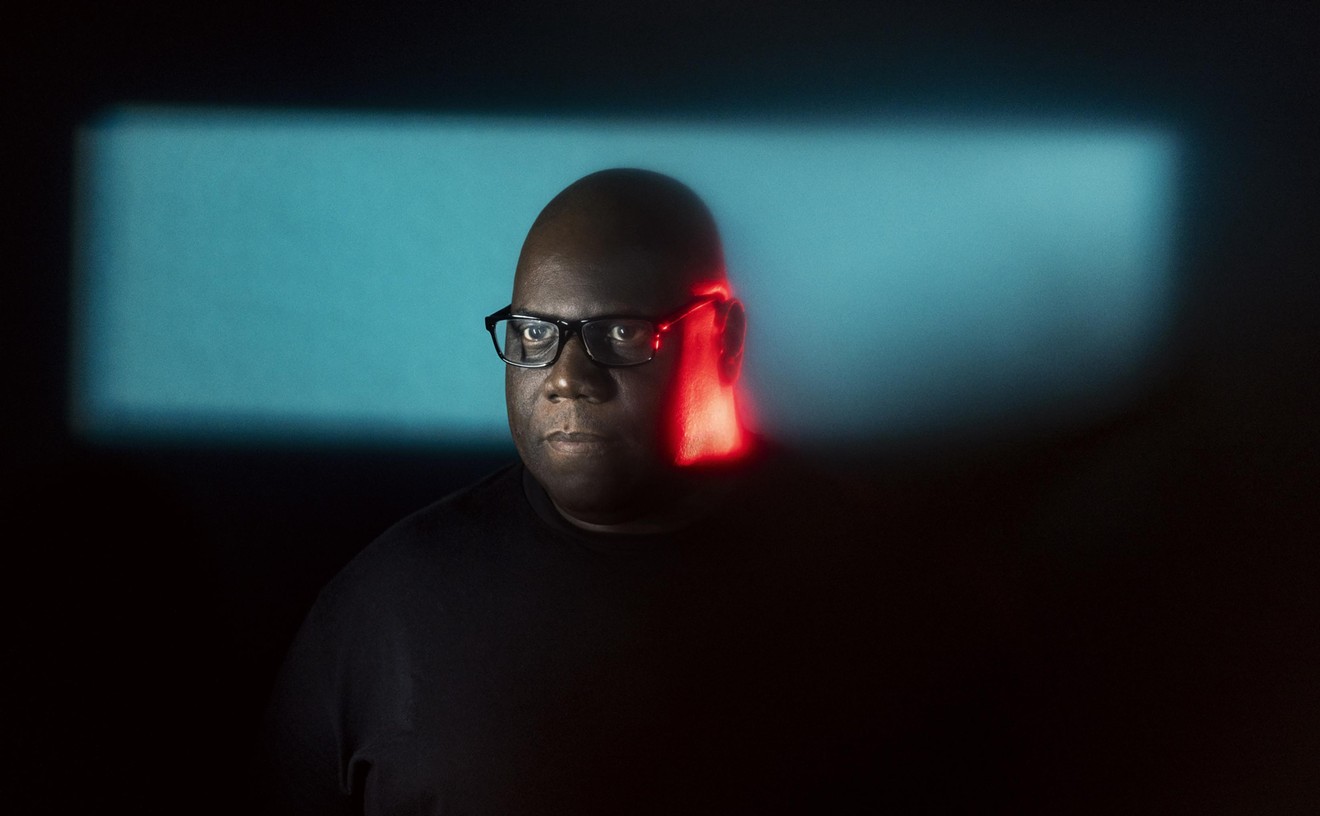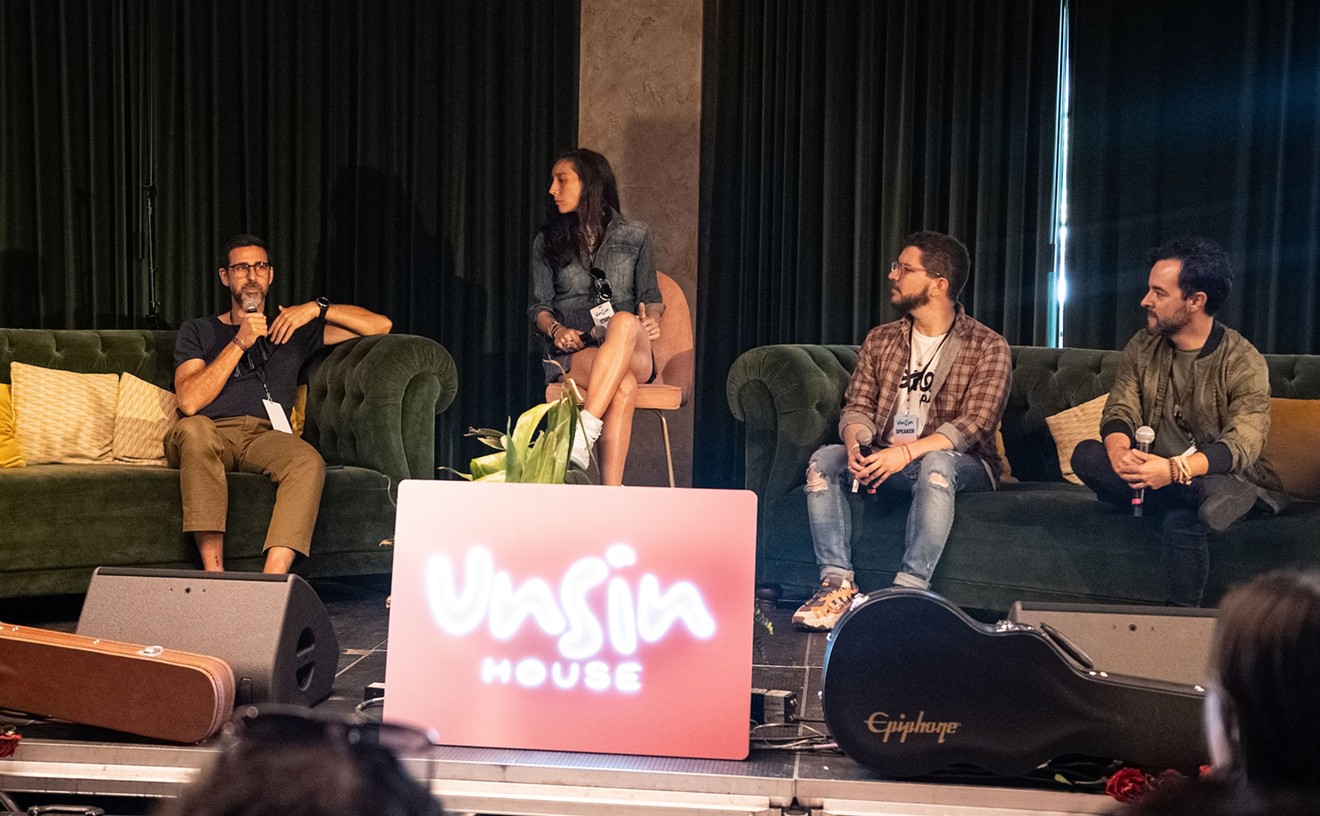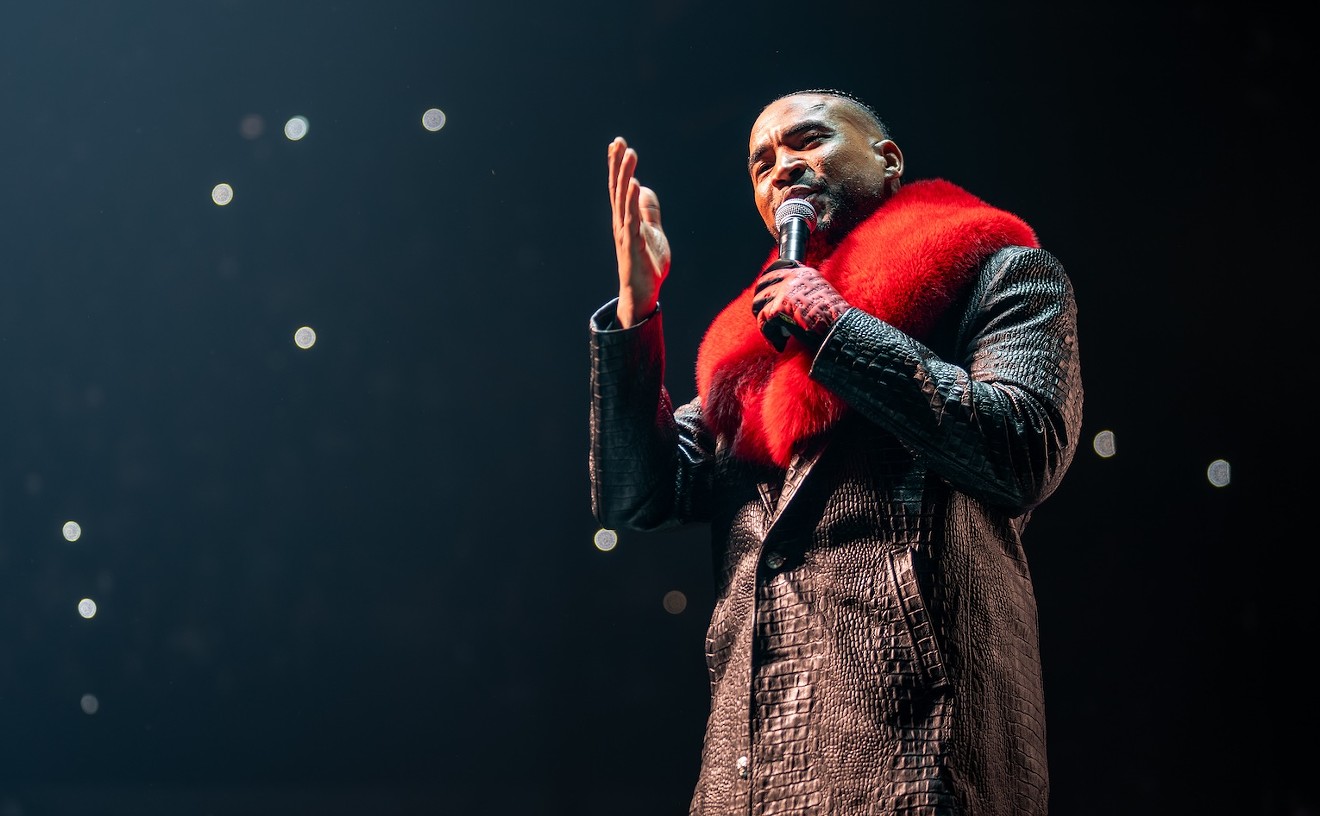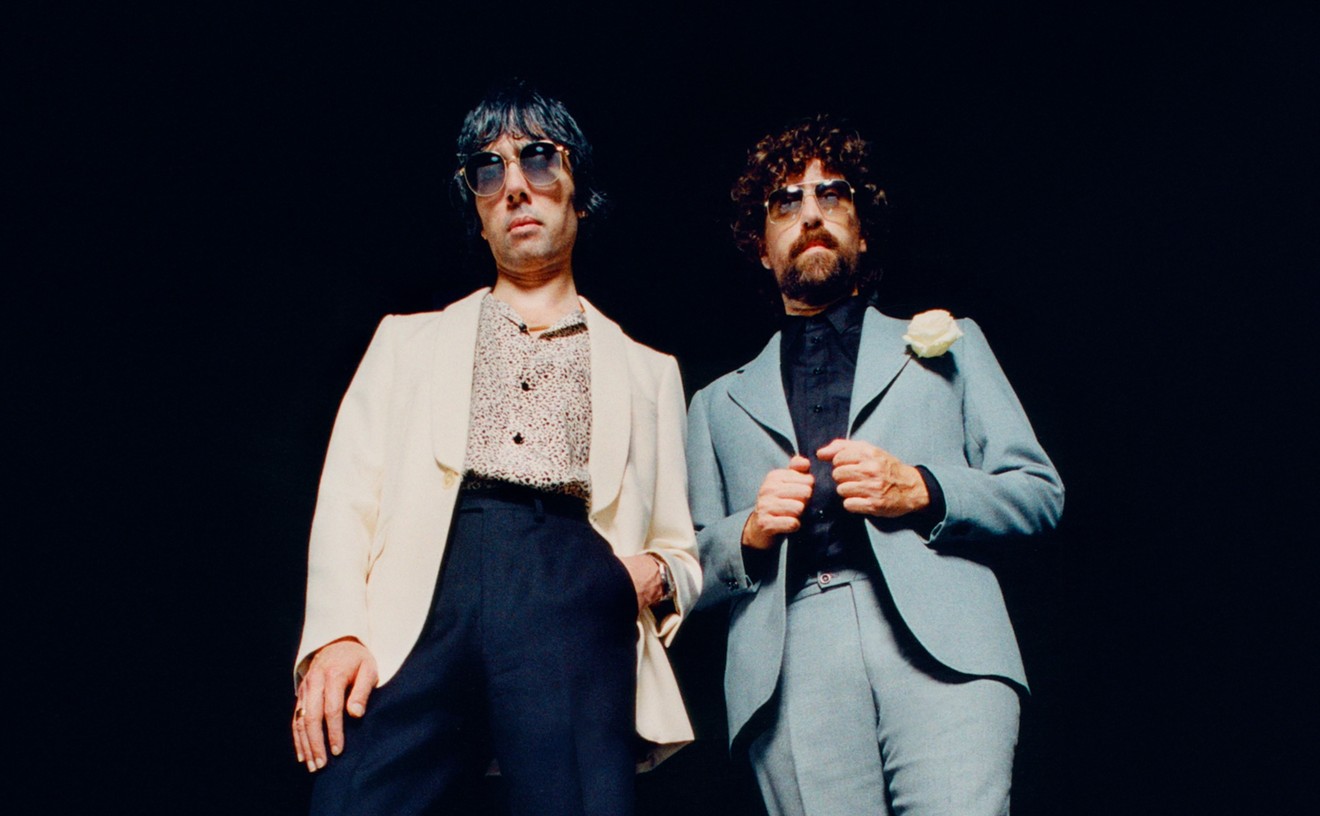There probably was no musician more beloved than Louis Armstrong. Pops's broadly smiling mug, trademark forehead-hanky-swipe, and most of all, inimitable honeyed grits and gravel vocals and higher- than-high-C cornet blasts were known anywhere in the world a phonograph could be cranked or a movie reel unfurled. Satchmo's legacy is nothing less than what we now call jazz. And after years of derision by boppers, too-cool-for-school avant-garde players, and some African Americans embarrassed by perceived Uncle Tom-ism, Pops is getting his props.
A movement has been afoot in recent years to re-evaluate Armstrong's contributions, placing some of Satchmo's more wince-inducing stereotypical performances into a larger cultural context of all-pervasive racism, balancing Louis the Entertainer with Louis the Artist. And one local musician helping to put a new shine on Pops's cornet is jazz guitarist and educator Simon Salz.
Salz has assembled a band to pay tribute to Armstrong, particularly Satchmo's early and influential years (1925 to 1927) with his Hot Five and Hot Seven. Formed last year for Black History Month -- the group played along with an Armstrong exhibition touring the Broward County libraries -- Salz's current Hot Seven includes trumpeter Melton Mustafa; Mustafa's half-brother Jesse Jones on saxophone and vocals; jazz fixture Abe Meeks on trombone; pianist Tony Prentiss; the incredible Phil Flanagan on bass; and WLRN video producer/jazz scholar Eric Bogard on drums.
Salz's own contribution, which he modestly downplays, is that of rhythm guitarist and banjo player. "I have to say," he reports with candor, "my part is not really that important to this project. I'm the coordinator. I've been organizing the rehearsals, and I know the musicians and got them together. But I don't do a lot of soloing. The banjo part is pretty much background accompaniment. I'll get a chance to blow a little bit, but the real focus is on Melton and Jesse. And I'm kind of back there in the rhythm section behind the scenes."
However, Salz does concede that his late Twenties counterpart, Lonnie Johnson, "was an incredible guitarist and one of the most important early jazz and blues players. He was pretty harmonically sophisticated," Salz says admiringly. "He was relating what he was doing to the chords, you know, his lead lines. More primitive players didn't care. To me that's the difference between a blues player and a jazz player," he says, allowing that Johnson had a foot in both genres. "A jazz player is more harmonically relating to the chords. He [Johnson] had a real distinct vibrato, and the tone he got was really something. I think he played a six-string banjo, tuned like a guitar."
Salz, however, plucks a tenor, or five-string, banjo. And Jones honks a soprano sax as opposed to Johnny Dodds's original clarinet. And Mustafa hefts a trumpet rather than Louis's favored cornet. And there's no tuba. But imitation, says Salz, was not as important as emulation to this project. "We came pretty close," he admits. "Some classical musicians will go all out to get exactly the same instruments. But we're jazz musicians and we're trying to do something that's entertaining also."
It's the spirit of the music, Salz claims, that the band was interested in capturing. "Certain pieces are more or less transcriptions from recordings," Salz says of the band's playlist. "Melton is going to be playing note for note on some of the pieces -- about four of the arrangements -- the exact solos Louis played. But we didn't want to take that too far. And that's challenging. Classical musicians do it all the time. But for jazz musicians to do, it's a little unusual. But I think it's valid."
And fitting improvisation, or self-expression, into a tribute show is tricky ground. "We are altering our playing somewhat to play in the appropriate style. It's sort of a fine line. I heard Gary Burton and Eddie Daniels [performing a tribute to Benny Goodman and Lionel Hampton at the Hollywood Jazz Festival] A in this case, maybe they went a little too far. They played some of the same tunes, but they were so modernized.... It's similar to when classical musicians play baroque music. They change their interpretation. Jazz musicians must have the same idea when they're playing different styles of American jazz. You don't play a lot of diminished Coltranesque scale runs in that style, because it kind of sticks out."
The program itself, which chronologically follows the material the band performed last year (they dip into the Thirties this time), includes some undeniable A although somewhat obscure to all but the jazz fan A classics: "Cornet Chop Suey," "I'm Not Rough," "Struttin' with Some Barbecue." This, Salz says, can be vexing to Satchmo fans who better know or remember Louis's later, more popular hits. "I think a lot of people are definitely not familiar [with this music]. We're trying to balance it. When we played the libraries, people were demanding "Hello, Dolly," and we know all that stuff and we may feel like throwing that stuff in if people demand it," he chuckles. "But it is a mixture. You know the audience is not all musicologists."
Once again the guitarist, who has taught at FAU, FIU, and the New World School of the Arts, finds himself straddling the grotto between audience acceptance and scholarship, staying true to his art while making a living, not losing that precious foothold on either side. But Salz learned long ago the value and personal rewards of entertaining and enthralling an audience. "My first big influence here was Ira Sullivan," he recalls. "He said, 'You're paying all that money to go to the University of Miami? Just give me the money and I'll teach you how to play!'" These were the days when the Unitarian Church and the Airliner were hot jazz venues. "That was sort of the antidote to Eastman [College in Rochester, New York] which was very intellectual and I learned a lot of theory," says Salz. "Ira taught me the other side of it. The sort of nonverbal things. Just learning the repertoire and getting over stage fright. And just playing a lot and getting my own personality out and not being so intellectual."
And the tributes Salz has been performing -- Benny Goodman, Django Reinhardt -- over the last few years are anything but pure intellectual exercises. After all, if the name Louis Armstrong is attached to the project, you know there'll be some serious blowing. "I think Louis was the first great jazz soloist," Simon says. "Before that time it was more of an equal thing with everybody playing at the same time. The early stuff with the Hot Five and Hot Seven is all counterpoint, although Louis stood out. Later he just sort of became a star, and he had all these recordings and everybody else kind of just sounds drab."
Simon Salz and His Hot Seven Jazz Band perform at 8:00 tonight (Wednesday) and tomorrow night (Thursday) at the Riverside Hotel, 620 E Las Olas Blvd, Ft Lauderdale, 524-0805. Admission is $15.










